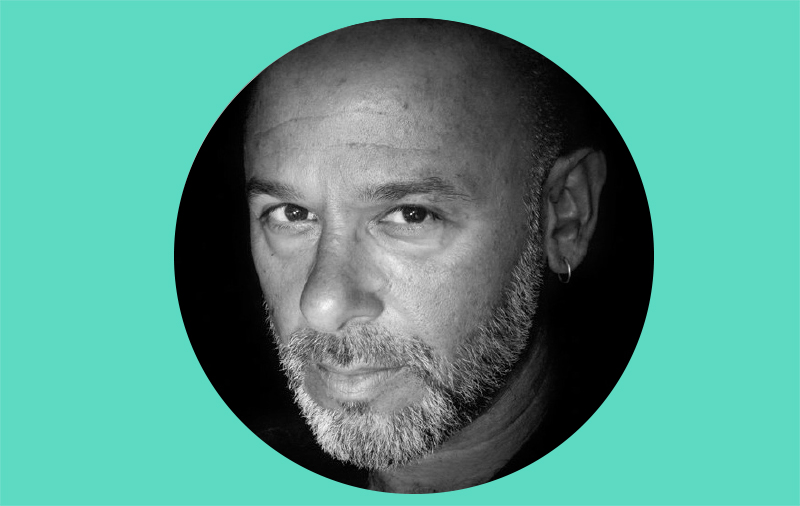A guest column written by Mike Sager.
I am so proud and pleased to be addressing you from the new electronic home of The Riveter, a site devoted to longform storytelling by women . . . for everyone.
The site represents the efforts of two enterprising journalism students from the University of Missouri. Faced with the obvious need for more outlets and greater promotion of women in literary journalism, they have taken it upon themselves to actually do something. Please take it upon yourselves, if you will, to come back here and visit frequently.
That their site exists partially because of their displeasure with one of my projects—and that I am here speaking today—is a tribute to the notions that: 1) Honest protest can often lead to fruitful dialog, and 2) Willingness to back up your displeasure with intellectual elbow grease often yields fantastic results.
Last fall, in reaction to woes about the state of longform journalism in the internet age, my fledgling publishing house, The Sager Group, released a collection of third-person stories by a new generation of writers, age forty and under. Next Wave: America’s New Generation of Great Literary Journalists, was edited in collaboration with my mentor, the educator and writer Walt Harrington. Although our two principal researchers were female grad students, and though the only filters on entries was birthdate and placement (mags, newspapers, and major websites) we came up with a final collection that reflected the numbers in the greater pile: In a field of 19 stories, only three were written by women.
In the main, the book has been wonderfully received. (I would not have met the two founders of The Riveter had Mizzou’s J school not chosen to create a mini-conference around Next Wave. And several of our writers have gone on to win awards this past year, including one of the women, Pamela Colloff.) But almost from the beginning of the publication process, as we sought blurbs from prominent educators around the country, it was clear we had discovered a major disconnect. According to several educators I’ve consulted, it’s pretty safe to say that nearly seventy percent of college and grad school journalism students today are female. Yet only a small percentage of the longform journalism being contracted and published today in the upper reaches of the market is written by women.
Of course, there are some causative factors to take into account. Much of the big-time longform writing today is being sponsored by sports and men’s interest magazines. Men’s mags want men’s voices. And women’s magazines, despite their thickness and wealth of ads, seem disinclined to include the types of stories that longform enthusiasts desire to read and write—deep, thoughtful and literary narratives that require time and resources to produce and plenty of space to run.
And then there’s the consideration of genre. No, there are not as many women successfully practicing longform journalism as there are men. But there are a ton of women practicing fiction, memoir, and other areas of creative nonfiction. (Areas where men have more difficulty, anymore; we all know the preponderance of writers and readers in these areas today are women.)
Not surprisingly, it turns out that there is little in the book marketplace in the way of female-centric journalism texts or primers, either. That’s where The Sager Group is hoping to make a difference.
As it happened, my publishing endeavors were funded modestly with money I was left by my father, a small town ob-gyn. He was well loved by his patients; he was an early volunteer at Planned Parenthood; he lived his life in fond service to women. I think it only fair that The Sager Group follows in these footsteps.
To that end, we have contracted two collections of great literary journalism aimed at raising the awareness of the role women have played—and continue to play—in shaping the genre.
The first, tentatively titled Newswomen: Twenty-Five Years on the Front Page, is already in progress. It is being edited by Dr. Joyce Hoffmann, a professor of journalism at Old Dominion University and the author of On Their Own: Women Journalists and the American Experience in Vietnam.
We’d like your help with the second.
The Stories We Tell: America’s Great Legacy of Women in Longform will collect work by a pantheon of women who have been most influential in the writing (and reading) lives of other women. Like Tom Wolfe’s The New Journalism, it’s our hope that The Stories We Tell will serve as a sort of sampler of the female cannon of literary journalism— a jumping off point for deeper individual study by readers and up-and-coming writers.
The Stories We Tell will be edited by Patsy Sims, director of Goucher College’s wonderful MFA in Creative Nonfiction Program. Sims is a well-traveled and award-winning journalist who has authored three books of longform journalism, including The Klan, which became an Academy Award-nominated documentary. Of course Patsy (and Joyce, too) are participating in this effort and will be forwarding this post along to their vast homegirl network of working journalistas. (Probably a better coinage than “good old girls club,” don’t you agree?)
Please join today in helping to assemble the table of contents for The Stories We Tell.
Who have been the women journalists and nonfiction writers who have most influenced you? Which of their stories have knocked you out? First or third person, travel piece, war reportage, profile…what is the work that inspired you?
Please email us at info@TheSagerGroup.net and let us know.
And remember to follow therivetermagazine.com. Tell your friends. Longform is for everyone.
Thanks for your time,
Mike Sager




